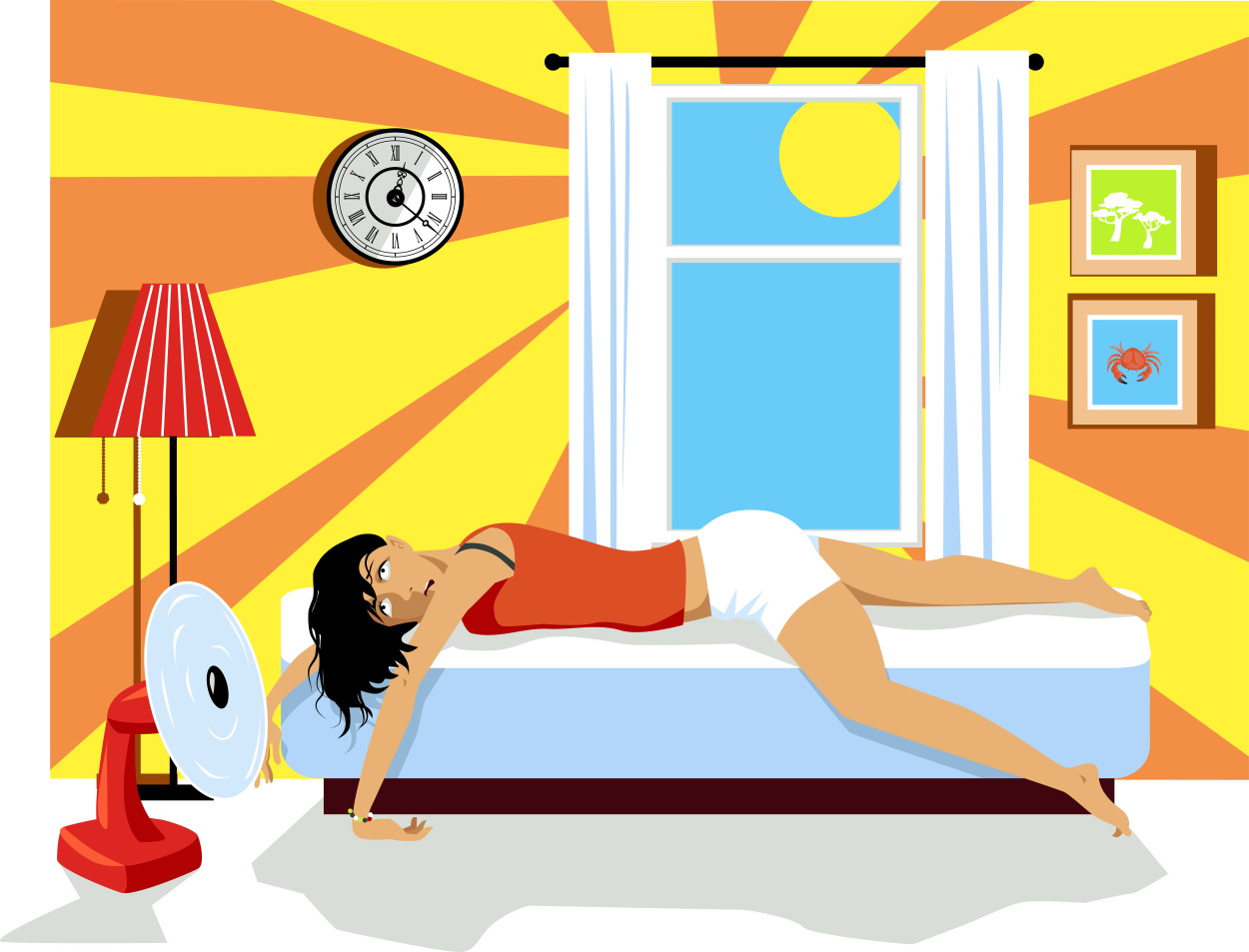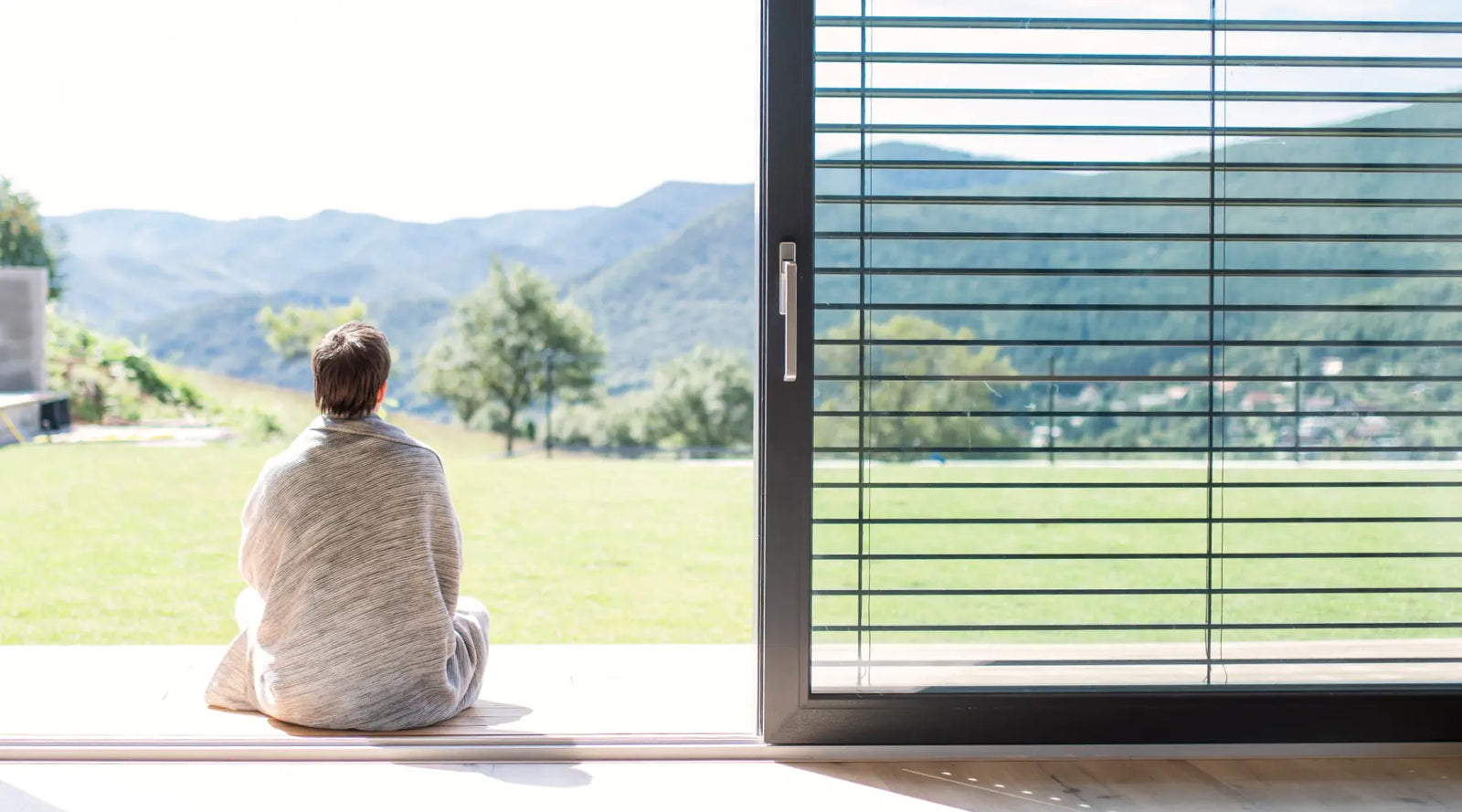No one enjoys a heat wave. Sure, they’re uncomfortable, and the high temperatures can make it feel like you’re living in a furnace. But the real threat of heat waves comes from the danger they pose to public health. Heat is the number one weather-related killer in the United States, and even non-fatal exposure can lead to dehydration, exhaustion, and, worse, heat stroke.
According to data from the National Oceanic and Atmospheric Administration, more people are exposed to heat waves each year. In the decades since the 1960s, we have seen a steady increase in heat wave frequency, duration, and intensity. Since avoiding a heat wave is getting increasingly difficult, let’s take a look at how to stay cool in a heat wave if (or when) one hits your area.
What causes heat waves?
A heat wave is a period of abnormally high temperatures that lasts two or more days. The definition of “abnormally high” varies by region, but it generally refers to temperatures above the historical average in a given area. In Texas, a week of 100-plus-degree weather in the middle of the summer would be considered a hot spell, but it would not qualify as a heat wave. The same temperatures in Maine, however, would be a different story.

A heat map of the US, Mexico, and the Caribbean during the Heat Wave of July 2022. Darker red colors indicate areas of high heat.
Heat waves are caused by high atmospheric pressure trapping hot air in an area. When a high-pressure system moves into a region, it forces warm air toward the ground. The warm air gets more and more compressed as it is pushed down, making the air feel even hotter.
Meanwhile, the high-pressure system spreads out vertically above the warm air, creating a dome over the trapped air and preventing it from leaving the area. The high-pressure system can stay put for several days or more, stifling wind and cloud cover as the trapped air keeps getting hotter.
Heat waves are more than just high temperatures. They are serious weather events that expose many people to dangerous levels of heat and impact a region’s infrastructure. The effects of abnormally high heat can strain health and emergency services, electrical grids, water resources, transportation systems, and even agricultural production.
How can heat waves impact your health?
Heat waves are one of nature’s most dangerous hazards. They don’t get the same media coverage as tornadoes, hurricanes, or other natural disasters, but heat waves are one of the top causes of weather-related deaths around the world. Between 1998 and 2017, heat waves claimed over 166,000 lives worldwide.
Exposure to high temperatures can be very demanding on the body. When the air is unusually hot and humid, it is harder for your body to cool itself. Plus, heat can often lead to dehydration and increased sweating, which can cause your body temperature to rise. When your temperature is above-normal for too long, you may start experiencing signs of heat-related illness. Health issues caused by heat exposure include heat cramps, heat exhaustion, and heat stroke.
Heat cramps
Heat cramps are one of the mildest types of heat-related illness. They usually take the form of painful muscle spasms or cramps in the legs and abdomen, though you may also experience them in other parts of the body. Heat cramps are often accompanied by heavy sweating.
If you think you are experiencing heat cramp symptoms, the Centers for Disease Control and Prevention (CDC) recommends stopping physical activity, moving to a cool place, and rehydrating. Seek medical help if your cramps last over one hour or if you have a history of heart problems.
Heat exhaustion
Heat exhaustion happens when your body overheats. Heat exhaustion symptoms include heavy sweating, pale and clammy skin, muscle cramps, nausea and vomiting, tiredness, dizziness, headaches, and fainting. According to the CDC, you should get medical help as soon as you start vomiting, your symptoms worsen, or your symptoms continue for longer than an hour.
Heat stroke
Heat stroke is the most severe heat-related illness and can be fatal if left untreated. Symptoms of heat stroke include a fever of 103°F or higher, hot or red skin, headache, dizziness, nausea, confusion, and loss of consciousness. The CDC advises calling 911 (or your country’s emergency number) at the first sign of a heat stroke.

First aid for heat stroke includes placing a cool compress on the patient’s forehead.
If someone around you is suffering from a heat stroke, move them to a cooler place, use wet cloths or a cool bath to lower their temperature, or get them to a hospital. Do not give water or any liquids to someone having a heat stroke.
Vulnerable groups during a heat wave
No one is immune to the effects of prolonged high heat, but some but some groups of people tend to be more at risk of heat-related illness than others. These include:
- Young children and infants, whose bodies cannot adapt to heat as well as adult bodies;
- Adults aged 65 and older, especially those who have pre-existing medical conditions, live alone, or have limited mobility;
- People with physically demanding occupations;
- People who are pregnant;
- Some communities of color and some low-income, homeless, or immigrant populations (due to limited access to air-conditioned spaces during a heat wave).
If you have any relatives or friends who fall into these groups, try to check on them during a heat wave and make sure they are healthy and staying cool.
The impact of air pollution during heat waves
Heat waves can be dangerous on their own, but they pose an even bigger threat on days with poor outdoor air quality. Researchers at the University of Southern California (USC) recently examined over 1.5 million deaths in California between 2014 and 2020 to analyze the link between heat waves, air pollution, and mortality rates. They found that the number of deaths increased by about 6% on days of extreme heat and 5% on days with high air pollution (measured by the level of fine particulate matter, PM2.5, in the air).
On days with both extreme heat and extreme air pollution, the risk of death was about three to four times higher—at 21%— than the risk on days with either high air pollution or high heat alone. For adults over the age of 75, the risk increased by more than 33% on those days.
In the USC study, researchers attributed the elevated death rates to increased oxidative stress, an imbalance between the body’s production of certain molecules, called reactive oxygen species (ROS), and its ability to clear them from cells and tissues. It’s been associated with an increased risk of lung, cardiovascular, neurological, kidney, and other diseases, as well as rheumatoid arthritis and some cancers.
Are heat waves related to increased air pollution?
On hot, sunny days, ultraviolet (UV) rays from the sun can fuel chemical reactions between oxides of nitrogen (NOX) and volatile organic compounds (VOCs) to create ozone. Ozone, while in the stratosphere, helps protect the Earth from the sun’s harmful UV radiation. However, ground-level ozone is harmful to human health.
During a heat wave, VOC and PM pollution builds up in the trapped warm air, leading to increased ozone pollution. Recently, researchers from the University of Birmingham in the United Kingdom recorded outdoor levels of ozone and PM during a heat wave. They found that both types of pollution peaked on days with the highest temperatures, with ozone levels increasing more than 50% from their baseline.
With climate change contributing to increased global temperatures and outdoor fine particulate pollution, exposure to high air pollution during heat waves is expected to increase over the coming decades.
8 Ways to Stay Cool in the Heat
During a heat wave, staying safe is synonymous with staying cool. Stay indoors whenever possible, especially during the hottest afternoon hours. Check in with friends and family to ensure that everyone has somewhere cool to shelter, and ask if anyone is experiencing signs of heat-related illness. (Make sure you have someone to check on you too!)

Keeping cool with friends is always safer, like these two New Delhi residents.
Unfortunately, staying inside isn’t always enough to escape the outdoor heat. The following tips can help you cool off indoors, whether or not you have air conditioning:
- Use a fan to circulate the air in your home. For the biggest cooling effect, use a cool cloth to wet the skin on your face and other exposed body parts. The wind from the fan will help the water evaporate faster. When water evaporates, it takes heat energy with it, cooling off the water left behind on your skin.
- Point a fan towards an open door or window to blow hot air out of a room. Avoid putting it right in the window or doorway. Instead, back it up a few feet so the air blowing through the fan pulls in the surrounding air as it leaves the room. (Thanks to a process called Bernoulli’s principle.)
- If you have ceiling fans, set them to spin counterclockwise, so they push air downwards. Most fans should have a small switch near the center hub that allows you to change their direction.
- Stay hydrated. The more you sweat, the more you should drink to replenish your fluids. While a cool glass of ice water can be so refreshing, try to add in a sports drink or slightly salty snack to help replace the sodium you lose by sweating.
- Let yourself sweat. Of course, the last thing you want during a heat wave is to make yourself hotter, but sweat can be a powerful tool for cooling off in high temperatures. Try eating spicy foods to help your body sweat without exposing yourself to extra heat or strenuous activity.
- On cool nights, open the windows to let fresh, cool air into your home. A portable air purifier can help capture any pollutants and pollen that come in from outdoors. It can also work with any running fans to circulate the air in your room.
- During the day, use dark curtains to block sunlight from entering your home and raising the temperature indoors.
- Avoid using incandescent light bulbs, ovens, stoves, or other appliances that generate heat.
In some parts of the world, heat waves may be unavoidable, but the health effects of heat exposure are not. It can be hard to justify slowing down when you have a lengthy to-do list hanging over your head, but nothing is more important than your health and well-being. Sometimes “beating the heat” is as simple as staying inside, shutting the curtains, and spending some quality downtime with your family and pets.












